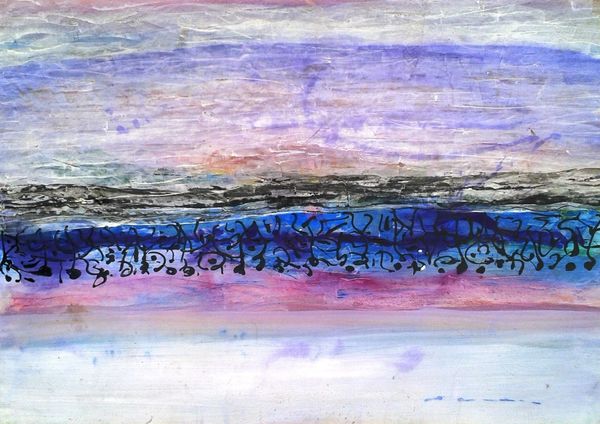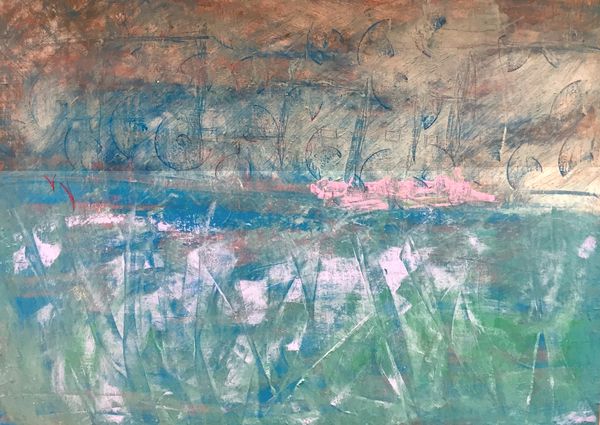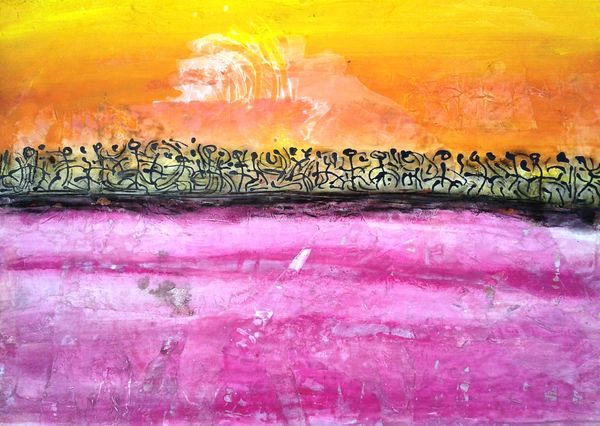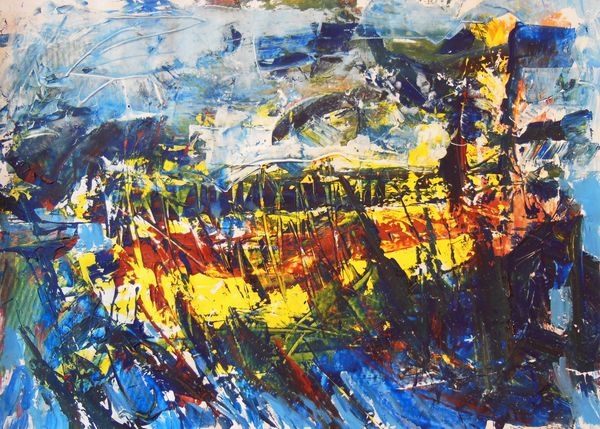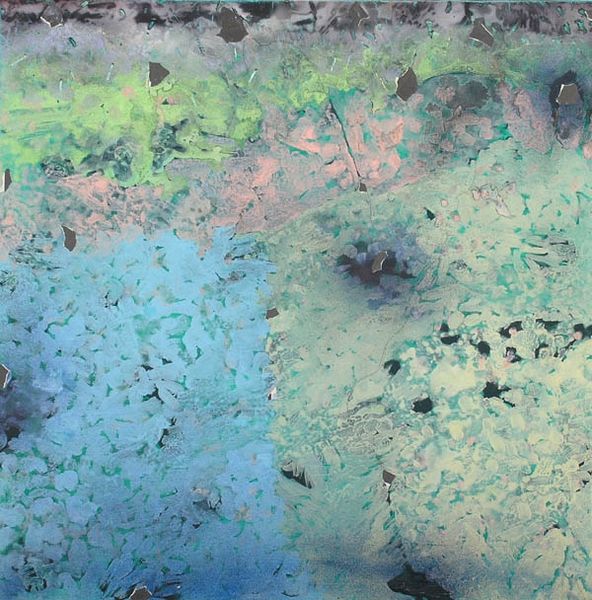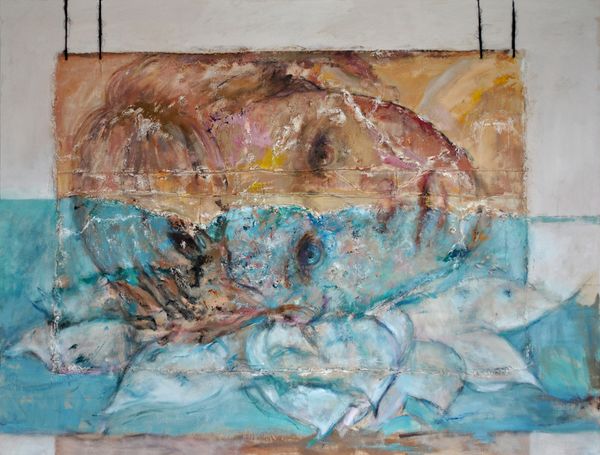
matter-painting, acrylic-paint, impasto
#
abstract-expressionism
#
abstract expressionism
#
matter-painting
#
landscape
#
acrylic-paint
#
impasto
#
acrylic on canvas
#
geometric-abstraction
#
abstraction
#
watercolor
Copyright: Jimmy Ortiz,Fair Use
Editor: Let's turn our attention to this artwork. It’s titled "2014 05 04 07.53.05" by Jimmy Ortiz, the date seems to be part of the title itself. It looks like a painting made with acrylic and perhaps some kind of texturing medium? There's something about the division of space – the upper portion versus the lower section of impasto—that strikes me. What do you make of the work, especially in relation to its context? Curator: Interesting. Given its potential classification as abstract expressionism, as the tags suggest, the work seems engaged in a visual dialogue typical of the time it was produced. But the painting doesn't just represent interior states or explore the qualities of paint itself. The textured, almost topographical lower portion contrasted against the turbulent, less dense upper portion, can be seen as commentary on landscape art, moving it into the arena of cultural critique, by engaging with the tradition of the sublime, maybe. Does this artwork remind you of land reclamation projects or contested land rights through its deliberate construction of a horizon? Editor: I hadn’t considered land rights. So you're suggesting it might not only be an abstract exploration, but a social commentary embedded in the very materials and the act of creating it? The lower section feels almost aggressively constructed, doesn't it? Curator: Precisely! The aggressive application of the impasto isn’t merely a stylistic choice. Matter painting brings its own socio-political and economical baggage that are important in how we approach this piece. The piece reminds us to explore art in its interaction with societal structures. It allows a historical dialogue around how artists position their work in relation to social and political concerns of their time. Editor: That definitely shifts how I view the work. I was initially caught up in its purely aesthetic qualities, but now I'm thinking about the power structures reflected, and sometimes resisted, within art production. Curator: And it's important to consider those structures because they deeply shaped artistic production. The institutional backing—or lack thereof—plays a significant role in what art is seen and valued. The museum itself is a historical actor shaping taste. Editor: This makes me wonder who had access to such resources like matter and space, and whose vision ended up shaping our world of art today. Curator: That's an essential question, and one that art history continues to grapple with. I’ve enjoyed sharing ideas about these powerful insights.
Comments
No comments
Be the first to comment and join the conversation on the ultimate creative platform.
